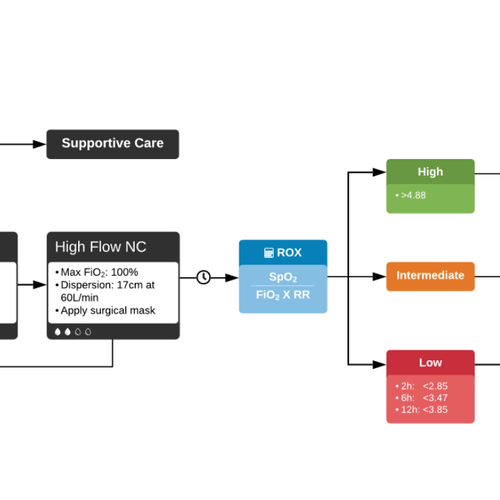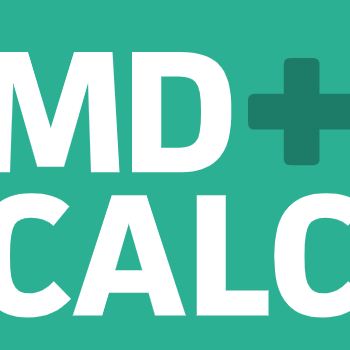PPE, Calculators & Essential Skills
Comparing PPE Conservation Strategies

The 'Comparing PPE Conservation Strategies' tool is an Excel-based simulation model intended to help healthcare centers estimate the consumption of various articles of Personal Protective Equipment (PPE), based on site-specific information and general conservation strategies during the COVID-19 crisis. This tool can also be used for planning PPE conservation strategies outside the context of COVID-19, where PPE shortages may also occur due to supply chain issues.
This tool can help illustrate the large differences in expected consumption of PPE articles when choosing between potential strategies to conserve supplies.
Click here to download the tool (.xlsm)
Critically, this tool has not yet been validated prospectively.
Other limitations include the assumption that input distributions (all uniform, for accessibility) are independent, which particularly affects the tails of the output distributions.
To use the tool:
- Select the level of resource conservation for each of three types of PPE.
- Enter site-specific values for non-outlier, typical patients
- Click on any of the 'run' buttons to run the simulation (after entering or changing any inputs)
The simulation may be interrupted by pressing the ESC key and selecting 'end'.
For each of three types of PPE (gowns, N95 respirators, and facemasks) the user may select between four levels of conservation:
- Liberal Use (no re-use of disposable PPE),
- Moderate Conservation (each healthcare worker reuses each article across every interaction with the same patient),
- High Conservation (each healthcare worker is assigned a limited quantity of PPE articles per shift), and
- Maximum Conservation (a subset of healthcare workers reuse a single article across multiple shifts).
The user should then enter inputs for the type(s) of PPE and level(s) of conservation of interest and select 'Click to run {Gowns, N95s, Facemasks}'
The user may also compare across any of the four levels (fill in all relevant inputs, click 'Clear & Run All' in the Outputs section).
**Kelly N. Z. Rickard (knzr.consulting@gmail.com) and Kenneth W. McKinley (kmckinley@childrensnational.org) are interested in feedback on the tool, as well as modeling other PPE-conservation strategies that are not well reflected in the options of the current tool. We plan to update the model in April 2020 to account for correlated inputs and based on model performance compared to prospective consumption of PPE in a large, academic, pediatric ED.
REFERENCE THIS TOOL: Rickard KN , McKinley KW. Data Analytics, Emergency Medicine, Children’s National Hospital and the George Washington University.
COVID-19 Intubation Demonstration
This video was prepared by The Gurney Room.
"This is a demonstration of one suggested approach to intubation for suspected COVID-19 infection, covering the steps from pre-oxygenation to ventilator connection. The goal is to limit virus escape during those steps. See the full article at www.thegurneyroom.com/covid.
Apply the bag-valve-mask to the spontaneously breathing patient for pre-oxygenation. Set the oxygen flow rate to 15 L/min or higher, ensuring that the reservoir bag remains inflated. The bag is not squeezed. With inhalation, the patient draws oxygen from the bag and reservoir. The one-way PEEP valve prevents room air from entering the expiratory outlet. Exhaled breaths close the duck-bill valve and exhalation goes through the respiratory port and out the one-way PEEP valve.
Induce and paralyze the patient with chosen medications for rapid sequence intubation (RSI).
Remove the mask and pass the endotracheal tube.
Inflate the endotracheal tube cuff. This is done prior to any ventilation to prevent aerosolization around the tube seal.
Disconnect the mask from the BVM and connect the endotracheal tube to the BVM at the viral filter.
Bag the patient.
When a ventilator is available, disconnect the bag from the patient at the end-tidal CO2, while keeping the viral filter connected to the patient’s endotracheal tube. Connect the endotracheal tube to the ventilator."
COVID-19 Bag-Valve-Mask Setup
This video is from The Gurney Room
This is a demonstration of one approach to assembling a bag-valve-mask for preoxygenation in cases of suspected COVID-19 infection. It requires a one-way valve on the expiratory port of the bag to separate the inhalation and exhalation routes. Without a one-way valve, room air is pulled in through the exhalation port during inhalation.
Some bag-valve-masks have a built-in one-way valve. When a bag is being used that does not, a positive end-expiratory (PEEP) valve can be connected and set to zero. This effectively creates a one-way expiratory valve. If PEEP is desired, a nasal cannula can be applied to the patient under the mask to pressurize the mask, and the PEEP valve can be adjusted to a set PEEP level. This is an optional step only required when PEEP is desired. In order to limit aerosolization, it should be done before the mask is applied. Note that the viral filter is connected directly to the mask.
Helpful Links
Full Title: Interim Guidance for Basic and Advanced Life Support in Adults, Children, and Neonates With Suspected or Confirmed COVID-19: From the Emergency Cardiovascular Care Committee and Get With the Guidelines®-Resuscitation Adult and Pediatric Task Forces of the American Heart Association in Collaboration with the American Academy of Pediatrics, American Association for Respiratory Care, American College of Emergency Physicians, The Society of Critical Care Anesthesiologists, and American Society of Anesthesiologists: Supporting Organizations: American Association of Critical Care Nurses and National EMS Physicians
Edelson et al. Circulation. April 9, 2020. https://doi.org/10.1161/CIRCULATIONAHA.120.047463
Downloadable Resources

Centers for Disease Control (CDC)
Sequence for Putting on Personal Protective Equipment (PPE)

Elsevier Clinical Skill Checklist
Isolation Precautions PPE Checklist

Isolation Precautions
Isolation Precautions: Personal Protective Equipment: Extended Text

University of Medicine and Dentistry of New Jersey
HEPA Filter and Ambulance Aerosol Clearance

Centers for Disease Control (CDC)
Hospital Respiratory Protection Program Toolkit: Masks-Understanding the Differences

State of California, Department of Industrial Relations
Cal/OSHA Interim Guidance on Coronavirus for Health Care Facilities: Efficient Use of Respirator Supplies


